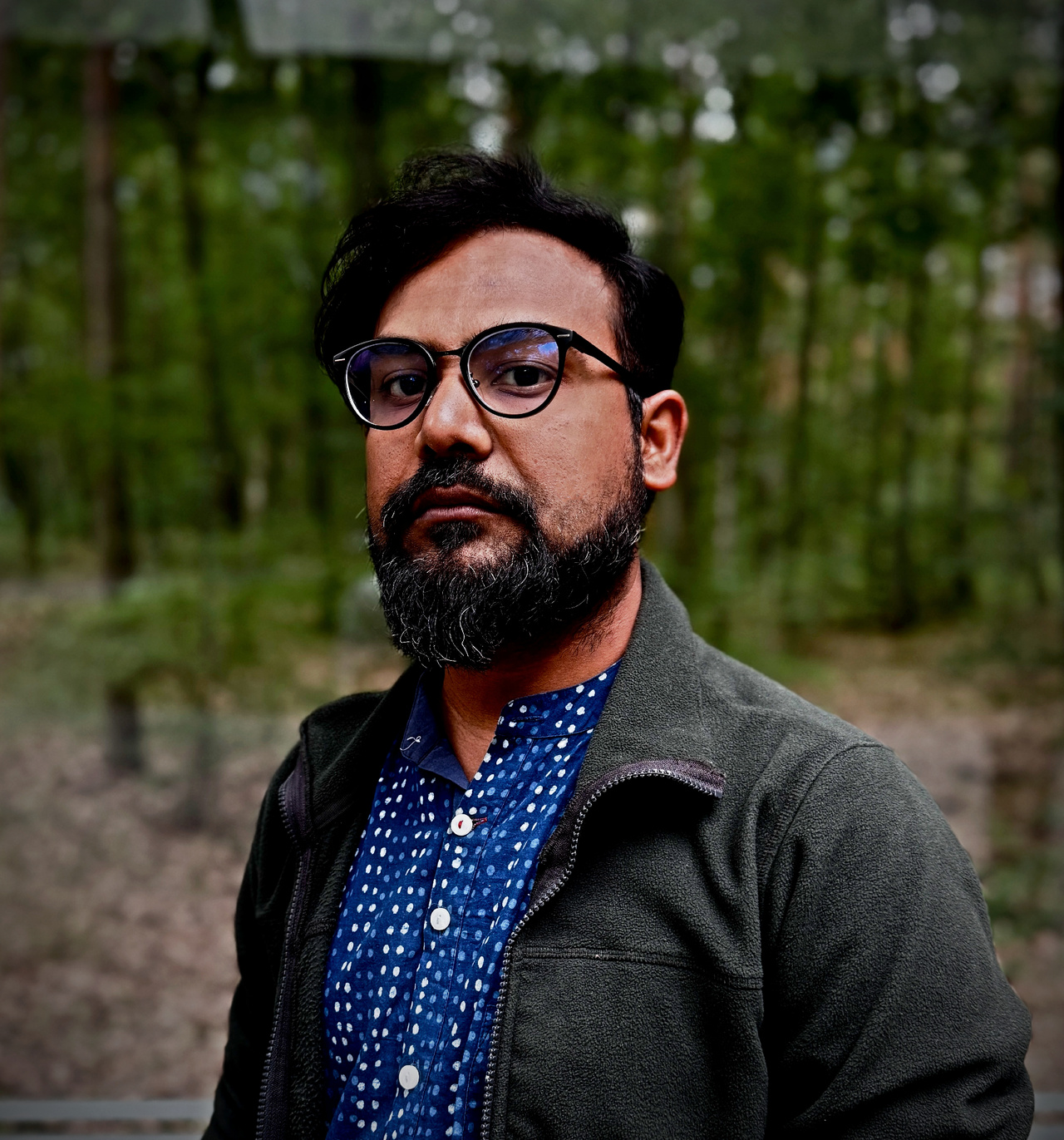Avik Debdas
Role at the ZKM
- Guest Artist
Institute / Department
- Hertzlab
Biography
Avik Debdas is an eclectic artist, curator, educator, and researcher whose practice bridges artistic enquiry with a background in engineering. With a strong foundation in research, curation, publication, and programming, he brings a nuanced understanding of contemporary art, critical theory, and global political urgencies to his work. Avik is committed to fostering political & ecological dialogues through interactive experiences, public art initiatives, and community-rooted projects.
Avik began his professional career as an engineer, spending eight years in the chemical industry, where he led various teams—an experience that shapes his critical approach to the entangled aesthetics and politics of global capitalism and the climate crisis in contemporary art. Besides his artistic practice, he has contributed as an editor, writer, and poet to several small-scale independent literary magazines in Kolkata, part of the region's long-standing "little magazine" tradition of experimental writing and independent thought. He was awarded Asia Art Archive-Inlaks Grant (2020) for his project The Taste of Bitter Time. He has taught at the School of Art & Architecture, Sushant University, Gurugram, and the College of Art, Delhi University.
Currently, he serves as Associate Curator-Exhibition & Research at the Kiran Nadar Museum of Art (KNMA), New Delhi, where he has led key curatorial projects such as Slow is the New Urgent, microSPILLS—an intensive educational initiative for young creative minds in Northeast India—and Rolling Museum, a curatorial platform that brings art into public spaces to foster dialogue and community engagement.
At ZKM, Avik is pursuing an artistic and curatorial research residency, as a Rave Scholar supported by ifa (Institut für Auslandsbeziehungen). His project, Plurality of Water, maps cross-cultural ecological imaginaries through the metaphorical lens of the "Intestines of Berlin" and the "Kidneys of Kolkata," exploring riverine and urban entanglements through transdisciplinary artistic practices.
